The Ultimate Green Juice Recipe
This incredible green juice recipe with kale, spinach, chard, cilantro, celery, cucumber, apple, lemon, and ginger comes from the Omega Juicers recipe center. This green-filled juice is sweet, delicious, and loaded with vitamins, minerals, and anti-inflammatory agents to help flush toxins from the body.
The Health Benefits of Kale Juice
With highly absorbable calcium (thanks to a high ratio of calcium to phosphorous) kale juice surpasses milk, cup for cup, in calcium provision. Rich in phyto-chemicals that combat free radicals, kale can lower the risk of colon, breast and lung cancers, as well as fight osteoporosis, macular degeneration, support the cardiovascular and immune systems, and assist in energy production. This mighty leafy green contains lots of chlorophyll, vitamin A (in the form of carotenoids and beta-carotene), vitamins C, E, B6, and K, folic acid, iron, potassium, magnesium, zinc, and sodium.
As a warming vegetable, kale’s a natural for a balancing cooler food. And juicing is a great way to enjoy it in its raw glory, as its flavor is less bitter, relative to that of uncooked kale eaten whole. Still, kale’s kale—which is to say intense; the juice is best blended. It pairs with a wide range of fruits and vegetables, from apple, lemon, carrot and pineapple to tomato, cucumber and melon. Kale makes a good substitute for spinach in any of these juices, but will bring in its slightly bitter sharp note. Juice it stalk and all, and enjoy your new friend with benefits.
The Health Benefits of Spinach Juice
Highly alkalizing, spinach contains nearly twice as much iron as any other green, and helps to build blood by helping red blood cells carry oxygen. It also helps strengthen all other cells, particularly those of the respiratory system and brain. Rich in chlorophyll and carotene, spinach can help reduce the development of abnormal cells and macular degeneration. Rounding things out, spinach also provides carotenoids, lutein, vitamins A, B complex, C, K, folic acid, iodine, potassium, calcium, magnesium, phosphorous, sodium and manganese, and many amino acids.
This popular and readily available mild leafy vegetable serves as a great introductory green for juicing. While spinach is cooling, we include it in every seasons cleanse since it’s a versatile ingredient that pairs well with all fruits and vegetables.
The Health Benefits of Chard Juice
A cousin of beet and spinach, chard—red, green or rainbow—is a storehouse of phytonutrients, boasting health-promoting and disease-preventing properties. Chard figures in cholesterol-control and weight-reduction programs, and is an excellent source of vitamin C, to combat free radicals, maintain normal connective tissue, prevent iron deficiency, and enhance resistance to infectious agents. One of the best vegetable sources of vitamin K for building blood, chard is also a rich source of omega-3 fatty acids, vitamin-A, flavonoids, and antioxidants like beta-carotene, lutein and zeaxanthin, as well as B vitamins, copper, calcium, sodium, potassium, iron, manganese and phosphorus. Regular consumption of chard may help prevent osteoporosis, anemia, vitamin A deficiency, and protect against cardiovascular diseases and abnormal cell development.
This leafy green is cooling and best balanced with warming ingredients like cayenne. The leaves and stalks produce a mild green juice like that of romaine lettuce, but more complex in flavor—it’s sweeter, tangier and a bit earthy. Since chard combines well with almost all fruits and vegetables, like spinach, it’s good company for a first foray into the realm of green juices.
The Health Benefits of Cilantro Juice
This herb is a health enhancer in an era when heavy-metal toxicity is rampant. Cilantro’s vigorous store of antioxidants makes it one of the most effective foods at flushing that stuff out of our systems. The controversial herb also contains powerful anti-inflammatory agents that ease digestion, nausea, headaches and bloating, and help stabilize blood sugar levels.
Cilantro easily gets overpowering in juices. A handful per serving usually does the trick. The entire plant—leaves, stems, and roots—is juice-friendly, the flavor pairing beautifully with pineapple, cucumber, lemon and lime.
If you’re not a fan of cilantro, substitute flat-leaf parsley.
The Health Benefits of Celery Juice
Alkalizing, detoxifying, anti-inflammatory, and loaded with nutrients: essential amino acids, tryptophan, vitamins A, B complex, C, calcium, phosphorus, iron, magnesium, iodine and copper, celery is also effective against respiratory conditions like bronchitis and asthma, and helps lower blood pressure. The organic sodium and potassium in celery make this juice a great post-workout refresher that helps replace electrolytes. It’s also a natural laxative and diuretic, supporting bowel and kidney health. Celery is a cooling vegetable, and we work it into our juices to take advantage of the rich mineral content and natural calming and sedative properties. We like it just as much, though, for its great flavor.
The natural salts are more abundant in the leaves, so when juicing celery, push the entire stalk (leaves and all) through the machine. That will yield a tangier, more savory juice. Celery makes a nice addition to almost any mix, especially juices made with leafy greens and other vegetables. As it sits, celery juice tends to get more assertive flavor-wise, so it’s best enjoyed right after it’s made. If you’re not using immediately, chill it, sealed up, but for no more than a few hours.
The Health Benefits of Cucumber Juice
This vege-fruit truly is the ultimate cool-hydrate-cleanse food. It’s right in there regulating body temperature and easing inflammation. A relative of squashes and melons, the cuke is a natural diuretic (due to that abundant water), aiding in cell hydration, waste removal, and dissolving kidney stones. Cucumber’s high silica content is great for the skin, and helps alleviate eczema, psoriasis, hair loss, and strengthen nails. The silica in cucumber also reduces the concentration of uric acid, which causes inflammation in the joints, muscles and tendons. A natural blood-pressure regulator, cucumber is high in vitamin A (mostly in the peel), B complex, C and folic acid, amino acids (methionine and tryptophan), potassium, sulfur, and natural chlorine. To take advantage of the nutrients in the skins, we always use the less-bitter-skinned English/Dutch variety. Any cucumber, though, goes well in our recipes.
We add cucumber to many juice blends as a way of adding mineral-rich water that’s way more beneficial than the plain filtered stuff. Cucumber juice is chock-full of nutrients, yet barely alters flavor. Cucumbers are intensely alkalizing, and a half (or whole) cucumber worked into a batch of juice offsets the acidic effects of high-sugar fruits and aids detox. Cucumber is our go-to base for sugar-free, alkaline juice blends, too. Make sure your cucumber is organic and hasn’t been embalmed in a coating of wax.
The Health Benefits of Apple Juice
Tasty, able to break down toxins, lower cholesterol, and enhance digestion, this fruit is a popular, versatile, and cost-effective go-to for juices. With phytonutrients, powerful antioxidants like quercetin, vitamin A (in the peel), vitamin C, and significant potassium, apple is a prime detox food that’s available year ‘round. As an aid to cleansing, apples’ high pectin content provides a great bowel regulator, able to slow the colon down or speed it up, as the body needs.
Apple is a cooling food, and we include it in juices to balance the bitterness of leafy greens and other vegetables. The sweet tang of apple blends with almost all fruits and vegetables; our preferred variety is Granny Smith, which has a tarter flavor and lower sugar content than common reds like Fuji, Delicious, and Honeycrisp. That said, this fruit is versatile, and our recipes work with any apple you have on hand.
We recommend coring apples before juicing, as the jury is still out as to whether the bit of cyanide occurring naturally in the seeds is detrimental to health.
The Health Benefits of Lemon Juice
This alkalizing tart tamer is a potent detoxifier and natural antibiotic that improves liver function, relieves constipation, and can help dissolve kidney and gall stones. High levels of vitamin C help boost immunity and alleviate symptoms of osteoarthritis and rheumatoid arthritis, as well as combat heart disease. Lemons provide calcium and magnesium for strong bones and teeth, along with unique compounds that have powerful antioxidant properties. The flavonoids in lemons have even been shown to halt abnormal cell division.
While lemons are cooling, this superstar can be balanced with warming foods like cayenne and fennel. We use lemons in lots of juice blends to lift the earthy and pungent quality of leafy greens and vegetables, add zip and tang, and balance the acidifying impacts of high-sugar fruits. You may want to remove the rinds of these fruits before juicing, as in substantial quantities they’re slightly toxic, or you may enjoy the zesty punch it adds—a good compromise is a bit of the peel along with the flesh.
The Health Benefits of Ginger Juice
Ginger is a brilliant health-promoting juice booster gives beautiful back-end kick to blends of all kinds. In one serving of juice, as little as a half-inch slice of washed, unpeeled root packs a powerful punch.
I rely on ginger as a warming agent for juicing, to counteract the cooling effects of fruits and vegetables, and to promote healthy sweating, beneficial to the cleansing process and fantastic for battling colds and flu.
This sensational herb-and-spice is an overall anti-inflammatory agent that stimulates the lymphatic system, provides cardiovascular and respiratory support, aids digestion and tones the intestinal tract, and relieves gas, bloating, nausea and gastrointestinal distress. It helps make blood platelets less sticky, and reduces risk factors for atherosclerosis. Ginger’s powerful antioxidants and anti-tumor agents can also protect against free radicals.
There’s no need to peel ginger before juicing. Much of the nutrients are in the skin or just beneath. Scrub the root, lop off a piece, and juice away. In our experience, people either love ginger in a juice, or hate it. Starting slow’s a good way to go if you’re unsure which camp you’re in.
The Best Juicer
I gets asked what juicer to buy at least 50 times a week. I own a lot of different makes and models of juicers, and I keep coming back to Omega Juicers. I use the Omega VRT 400 HDS, and it is amazing.
Most juicers process at a speed of 1,650 to 16,000 RPM, destroying many healthy enzymes and causing juice to degrade shortly after being extracted. While this one has a low speed juicing system that processes at 80 RPM, extracting the highest degree of juice, preventing oxidation, and allowing juice to be stored for up to 72 hours without degradation. This machine is also really gentle and quiet.
With a 2 HP condenser motor, fine and coarse juicing screen for pulp control, ULTEM juicing screen that withstands heavy duty juicing, and an innovative auto cleaning system that keeps the screen clear during juicing & increases efficiency, this juicer rocks! You can also juice wheatgrass at high yield.
With it’s powerful commercial motor, this masticating juice extractor thoroughly chews up plant fibers to fully extract the maximum amount of vitamins, enzymes, and minerals from all fruits and vegetables. With a dual-stage juicing system that ensures maximum efficiency, and it’s low rotation speed of 80 RPMs, there is no foaming, no clogging, and no heat build-up.
This juicer also yields a high amount of juice with very dry pulp. There is an automatic pulp-ejection function for continuous juicing, which makes it really easy to use. It is also super quiet. This juicer is also really easy to clean, which is always an important consideration and it comes with a 15-year warranty, and excellent customer service.
So, check them out.
*I am a paid ambassador for Omega Juicers. But, my opinions are my own.
Other Green Juice Recipes For You
Green-Aid – The Best Green Juice
Immune-Boosting Green Juice
Allergies-Be-Gone Green Juice
Alkaline Low-Sugar Green Juice
Get Healthy With a 3-Day Juice Cleanse
1. DOWNLOAD the FREE 5-Day Energy Boost.
2. START the 3-Day Juice Cleanse.
3. JOIN our Cleanse Facebook group to get support.
Let me know what you think of this recipe in the comments!
Your feedback is important to me, and it helps me decide which recipes to post next for you.
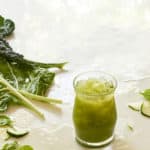





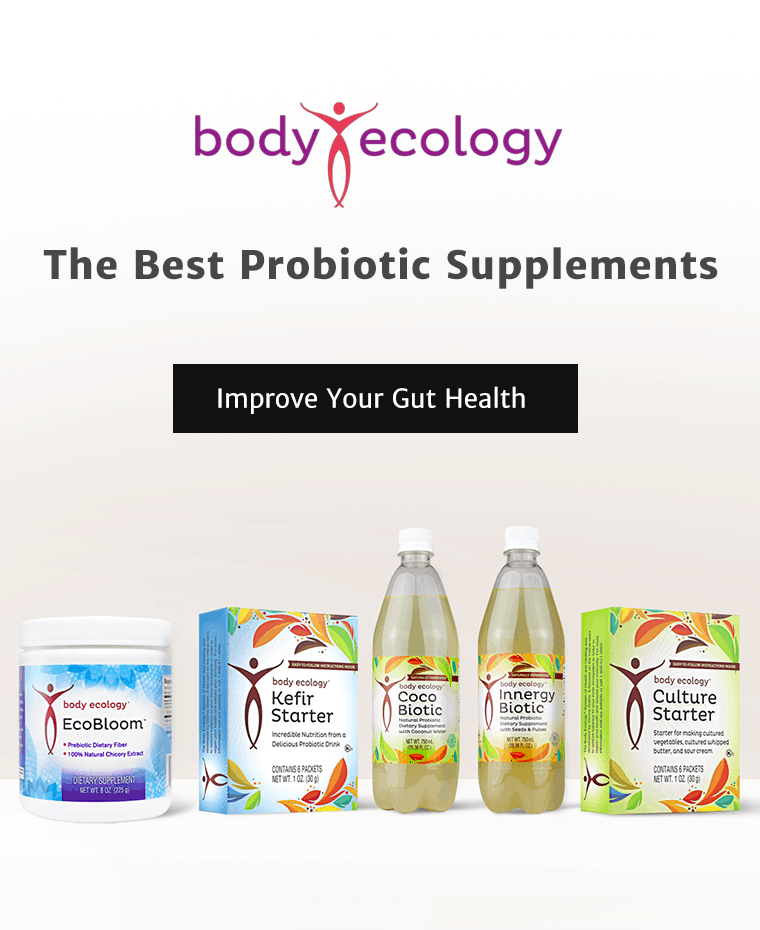
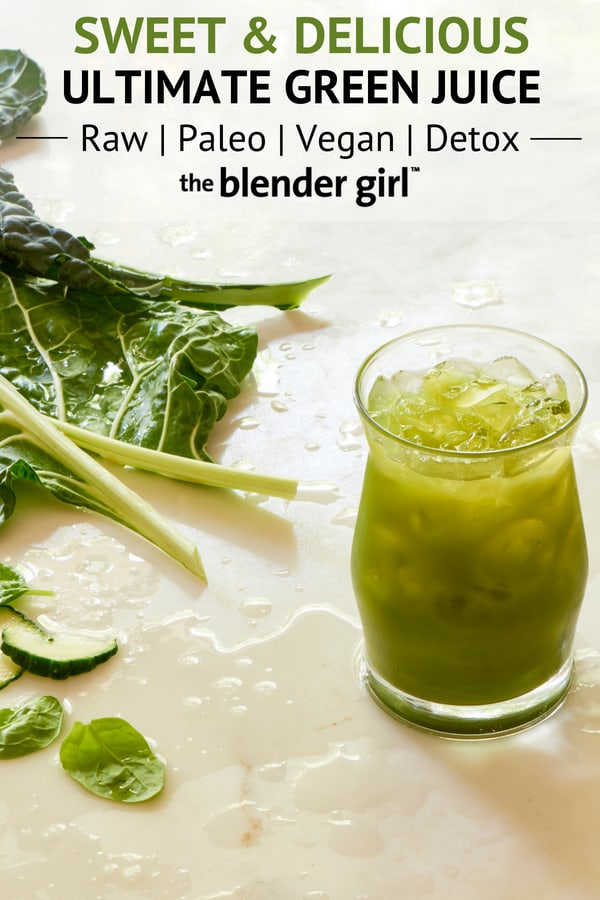
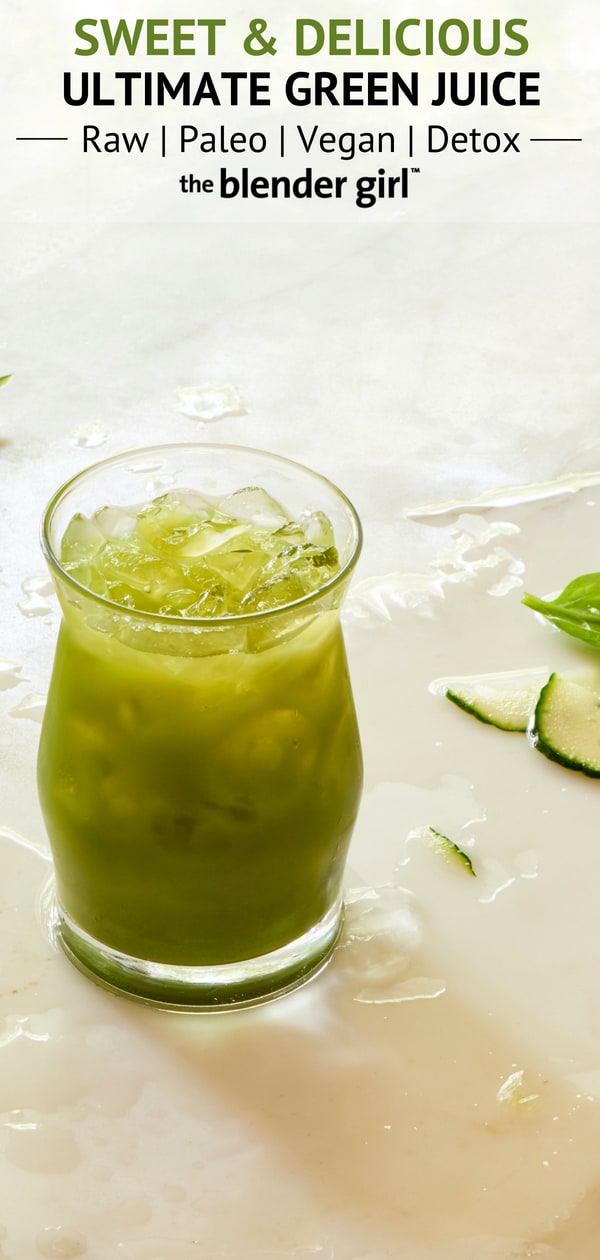
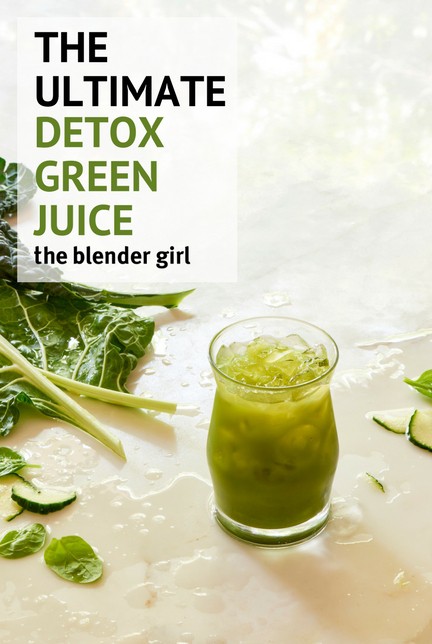
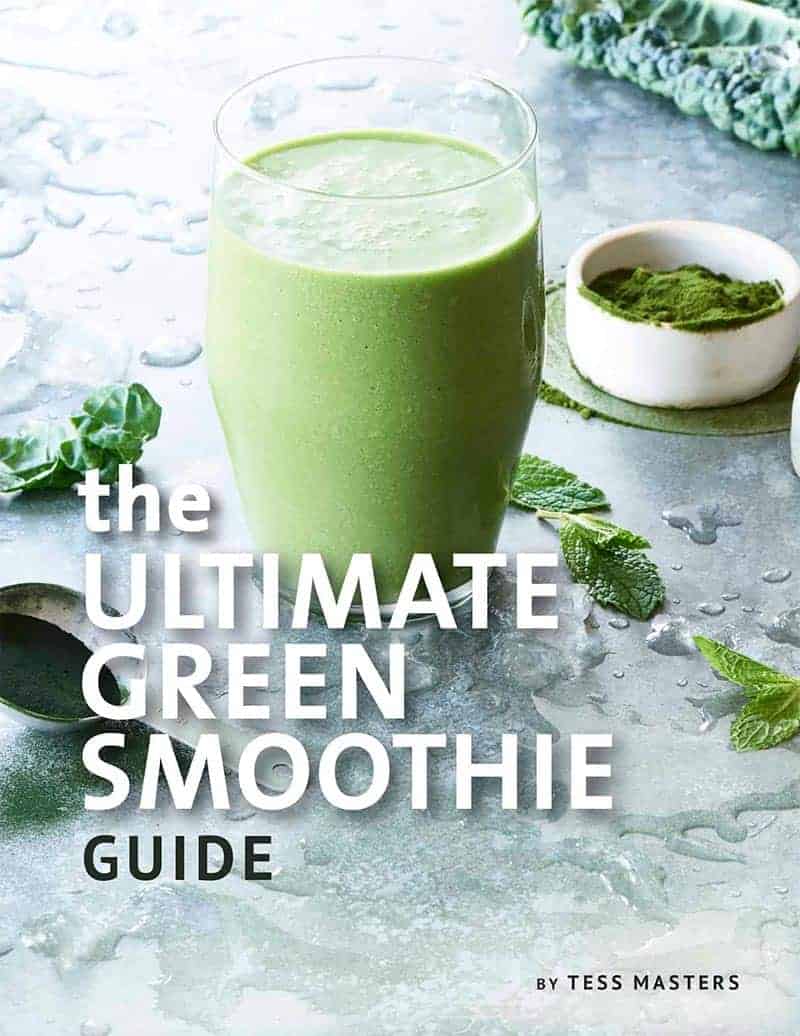
Comments 4
juice!
LOVE Juice!
YUMMO!! And where did you get those adorable little mugs! What a brill idea!! =’.’=
This is delicious! I got those cute mugs at World Market for about $3.00 BARGAIN. They have some really great glasses there in all shapes and sizes. Enjoy 🙂